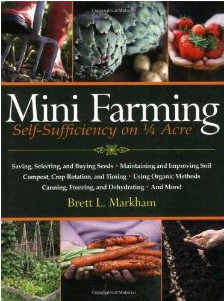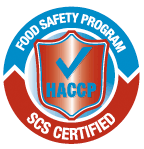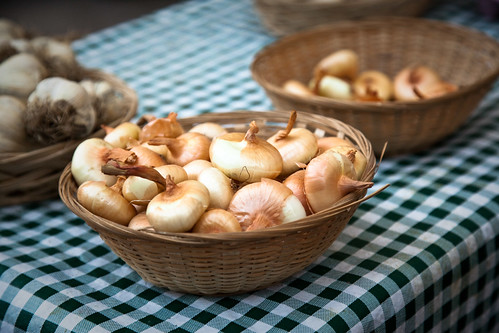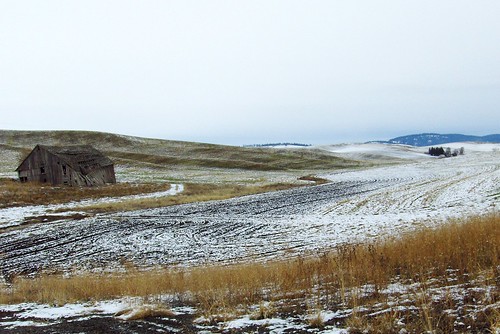Archive for the ‘Quick Tips’ Category
Disaster Preparedness Brings Peace of Mind

As the New Year begins, the Red Cross is encouraging families to be prepared. Knowing what emergencies are most likely for the areas where they live, work, learn and play, and taking steps to plan for them will bring families a measure of peace. Emergencies to think about can include wildfire, tornado, hurricane, earthquake or floods, but families should also plan for unusually heavy snowfall and ice storms that can cause power outages and disrupt utilities and other services.
- Grab-and-Go: These are kits or bags that contain essential and useful items in case you are forced to leave your home or shelter in place. Check out www.redcross.org for a list of items that go into an emergency preparedness kit and to watch a really cool video about being prepared.
- Gathering the following items can bring you some peace of mind now: Three-day supply of nonperishable food and water—one gallon per person per day for drinking and hygiene purposes; battery-powered or hand-crank radio, preferably NOAA weather radio; flashlight and extra batteries; first-aid kit, medications and medical items; extra cash; and copies of important documents such as proof of address, deed or lease to home, passports, birth certificates and insurance policies.
- Plan. Plan. Plan. Talk with family and household members about what they should do during a flood, earthquake, wildfire, snow storm or ice storm. Plan what to do if members are separated and choose two places to meet— one outside the home and another outside the neighborhood in case of evacuation.
- Choose an out-of-area emergency contact person. All household members should have this person’s phone number and email address. It may be easier to call long distance or text if local phone lines are out of service.
- Tell everyone in the household where emergency information and supplies are kept.
- Practice evacuating the home twice a year. Drive the planned evacuation route and plot alternate routes on a map in case main roads are impassable.
- Plan ahead for pets. In case of evacuation, make arrangements for animals. Keep a phone list of “pet friendly” motels or hotels, animal shelters and fair grounds that are along the evacuation routes.
- Be informed. Know the risks in neighborhoods where family members live, work, learn and play.
- Assemble information about what to do in case a flood, earthquake or wildfire occurs. Remember that emergencies like fires and blackouts can happen anywhere, so everyone should be prepared for them.
- Find out how to receive information from local officials in the event of an emergency. Many cities conduct CERT programs (Community Emergency Response Team) that trains residents in all aspects of disaster preparedness. They also hold first aid and CPR/ AED training events, since during a disaster first responders may not be as available. Contact the local Red Cross chapter for training.
For more information on disaster preparedness and emergency response, visit www.redcross.org. For information about CERT training classes contact your local police or fire department.
![]() Photo credit: Burke County Red Cross
Photo credit: Burke County Red Cross
Quick Tips For Homesteaders
Keeping Whites Whiter with Lemons
Dingy napkins, linens even white socks and T’s can be brought back to their brightest white. Simply fill a large pot with water and a few slices of fresh lemon; bring the pot to a boil. Turn off the heat and add your linens or clothing items. Let soak for up to an hour; launder as you normally would. For extra brightness, line dry them on a bright sunny day.
Removing Melted Wax
Candlelight may be romantic, but there’s nothing sexy about prying melted wax out of a candleholder. To remove wax easily, place holders in the freezer for a few hours. The wax should shrink enough that the spent candle slips out easily.
Storing Candles
We all love the glow of a candle lit room on a cold winter’s day. But, when weather is warm and days are long candles are not needed as much. To store candles and keep their true color, wrap in tissue paper and store in a dark place. To keep candles from warping make sure their storage place is cool.
Freshening up potted plants
Potted plants are a great way to bring the outside in during long winter months, but with the dry air of a heated home the topsoil can dry out, making water absorption more difficult. To freshen up potted plants, remove the top 2 to 3-inches of soil using a fork. Refill with fresh soil mixed with a slow-released fertilizer.
Removing Red Wine Stains
For a sure fire way to remove red wine stains, wet the stain with lukewarm water, then sprinkle on a layer of table salt. Rub gently and let stand for 5 minutes. Pull fabric taut across the top of a heat-proof bowl or large pan and secure with a rubber band. Place the bowl or pot in the sink and pour boiling water over the stain from a height of 3-feet. The combination of heat and pressure of the water will eliminate the stain.
Keeping Berries Perfect While Harvesting
When picking berries use several shallow pans, buckets, basket or trays; this prevents the weight of the berries on top from smashing the ones below.
Storing Tomatoes
Tomatoes are not like other vegetables, they should always be kept at room temperature. Large, shallow bowls or platters are perfect and look beautiful in the kitchen. Unripe tomatoes can be placed in a sunny window or in a brown paper bag for a few days to ripen. Be sure to check them every day to catch them at their perfect ripeness.
Mini-Farming
 Self-sufficiency on ¼ acre
Self-sufficiency on ¼ acre
I saw this book listed in a farming magazine I get and thought some of you might like to know about it.
Engineer and part-time farmer, Brett Markham describes his approach to small-area farming while showing how you can grow 85% of an average family’s food on just a quarter of an acre.
From buying and saving seeds to planning a garden to home canning this book covers a variety of ways to keep growing costs down while keeping production high.
_
Food Labels – What’s in a Name?
Food labels contain a wealth of information to help you make informed choices at the market, but they can also be confusing and even misleading. To become better informed about the labeling and certification in your food choices read the meaning of each label below or visit their website. Better yet, ask the produce manager or the farmer where your food comes from and how it is grown.
 Local – There are no consistent standards for use of the term, which may refer to a region, a state or the immediate ridgeline or watershed. It may also be applied to products that are made locally but of imported ingredients (chocolates, cheese, pastries, locally roasted coffee).
Local – There are no consistent standards for use of the term, which may refer to a region, a state or the immediate ridgeline or watershed. It may also be applied to products that are made locally but of imported ingredients (chocolates, cheese, pastries, locally roasted coffee).
 Organic – Certified by the US Department of Agriculture (www.usda.gov, www.ccof.org) to meet standards that disallow the use of most conventional pesticides, genetic engineering, and routine use of antibiotics and growth hormones in livestock.
Organic – Certified by the US Department of Agriculture (www.usda.gov, www.ccof.org) to meet standards that disallow the use of most conventional pesticides, genetic engineering, and routine use of antibiotics and growth hormones in livestock.
![]() Sustainable – “Sustainable food” certification programs address an array of social and environmental issues that go beyond “organic,” including safe and fair working conditions, healthy and humane care for livestock, reduced pesticide use, reduced water and non-renewable energy use, and enhanced soil health. Visit the Food Alliance (www.foodalliance.org) and Scientific Certification Systems (www.scscertified.com) to learn more.
Sustainable – “Sustainable food” certification programs address an array of social and environmental issues that go beyond “organic,” including safe and fair working conditions, healthy and humane care for livestock, reduced pesticide use, reduced water and non-renewable energy use, and enhanced soil health. Visit the Food Alliance (www.foodalliance.org) and Scientific Certification Systems (www.scscertified.com) to learn more.
![]() Fair Trade – Fair trade partnerships seek to offer better trading conditions to, and secure the rights of, marginalized producers and workers, especially in developing countries. Certification by the Fair Trade Labeling Organizations International (www.fairtrade.net) guarantees that a producer’s fair trade claims have been independently audited and verified.
Fair Trade – Fair trade partnerships seek to offer better trading conditions to, and secure the rights of, marginalized producers and workers, especially in developing countries. Certification by the Fair Trade Labeling Organizations International (www.fairtrade.net) guarantees that a producer’s fair trade claims have been independently audited and verified.
 Fair Labor – Criteria includes hiring and employment practices, safe workplace conditions, workers right to organize, worker housing, child labor, and access to health, education and transportation services. Currently two organizations certify safe and fair ag practices in the United States: www.scscertified.com and www.safeagemployment.org.
Fair Labor – Criteria includes hiring and employment practices, safe workplace conditions, workers right to organize, worker housing, child labor, and access to health, education and transportation services. Currently two organizations certify safe and fair ag practices in the United States: www.scscertified.com and www.safeagemployment.org.
 Clean – Foods certified by organizations like Scientific Certification Systems (www.scscertified) to have met voluntary standards in one or more areas of potential concern, including pesticide residues, food pathogens, industrial contaminations and heavy metals, and food safety procedures and practices throughout the food supply chain.
Clean – Foods certified by organizations like Scientific Certification Systems (www.scscertified) to have met voluntary standards in one or more areas of potential concern, including pesticide residues, food pathogens, industrial contaminations and heavy metals, and food safety procedures and practices throughout the food supply chain.
Old Wive’s Tale or Just Plain Wise?
I recently found this article in one of my favorite magazines – MaryJanesFarm. The simplicity of the message was so fascinating (and relevant for this time of year) that I had to share with all of you.
Fact or folklore?
When the 1918 flu pandemic killed 50-100 million people between 1918-1920, there was said to be a doctor who visited many farmers to see if he could help them combat the flu. The doctor came upon one household where everyone was very healthy. When the doctor asked what the family was doing that was different, the wife replied that she had placed a dish of unpeeled onions in each room of the house. The doctor asked if he could have one of the onions to observe under a microscope. When he did, he found traces of the flu virus in the onion. It had absorbed the infection, keeping the family healthy.
I heard this story from my hairdresser in Arizona. She said that after hearing it, she placed onions around her shop during flu season. To her surprise, none of her staff got sick that year. Another friend reported, “I developed pneumonia after a bad cold and, needless to say, I was very ill…I came across an article that said cut both ends off an onion and place it in an empty jar next to the sick patient at night. It said the onion would turn darker in color by morning from the germs. Sure enough, it happened just like that…and I began to feel better.”
MaryJane reports that during bouts with colds and flu, her grandma would have her eat a slice of onion sprinkled with salt to chase away the germs.
The moral of the story? Buy some onions and place them in bowls around your home. If you work at a desk, place one or two in your office. We did it last year, and no one in our family got the flu. If this helps you and your loved ones from getting sick, all the better. What have you got to lose?
I think I’m going to add extra onions to my shopping list. How ‘bout you?
![]() photo credit: sebastien.b
photo credit: sebastien.b
Winter Maintenance for Garden Tools
With the end of November quickly approaching, nature has signaled the end of the growing season for most parts of the country.
Now is the time to put your garden tools to bed as well, sort of speak. Learn how a few moments of preventative maintenance can help extend the life of your tools by clicking here, and keep your tools in good working order for many more seasons to come.
![]() photo credit: lovestruck.
photo credit: lovestruck.
Winterize your hands and feet
Winter’s cold winds and harsh temperatures can wreck havoc on a homesteader’s hands and feet. But, with this easy and inexpensive solution you can have baby-bottom soft skin all winter long.
After a bath or shower, or when evening chores are finished and you have time to sit, simply slather a thick layer of lotion over hands and feet, then put on a thick cotton sock. Yep – on your hands too. The warmth created from your body’s heat and the sock causes pores to open, allowing the lotion to soak deep into your skin. You can sleep with your socks on for even better results.
Try this several times a week and you’ll make it through winter without sore, cracked, rough hands and feet.
![]() photo credit: telepathicgeorge
photo credit: telepathicgeorge
Make Your Own Garden Trellis
Hint & Tip
Make your own garden trellis
Before you chop up grape cane or berry vine pruning’s for the compost, consider saving them to make your own garden trellises.
Simply pull off any leaves and scrap off the thorns and you have the perfect material for making trellises that can be used for vining peas, beans or even small cucumbers.
Before the canes dry completely, take several sturdy straight pieces for the uprights, then twine the remainder around the uprights in the diameter you want. Leave room at the bottom so the trellis can be pushed into the soil.
Once finished, tie the intersections to hold the trellis together. Vine trellises will last a few seasons and can then be chopped up and composted. You’ll save money on buying premade- trellises and your garden will have a fine country feel with natural made trellises.
(if you don’t have grapes or berries on your suburban homestead you can also use small diameter saplings)
Extend the Life of Kitchen Sponges
Tip & Hint
Extend the Life of Kitchen Sponges
There’s nothing worse than spending good money on kitchen sponges only to throw them in the trash when they get sour and moldy smelling. But, with this quick tip your kitchen sponges will last much longer.
Simply place the sponges in the dishwasher each time you run it and they will stay fresh and useable for a longtime – saving you money.




Recent comments
Aenean nonummy hendrerit mauris. Phasellus porta.